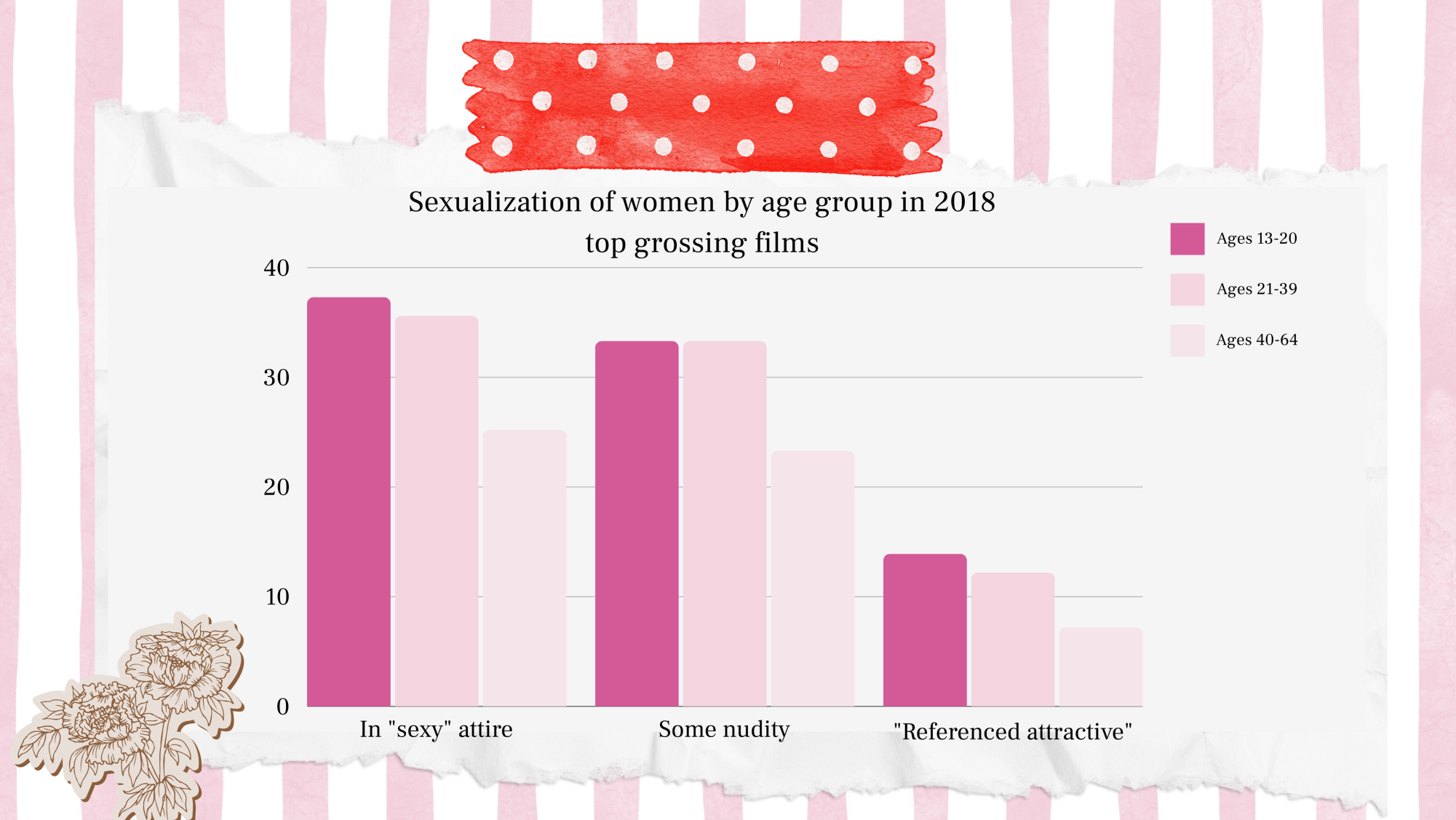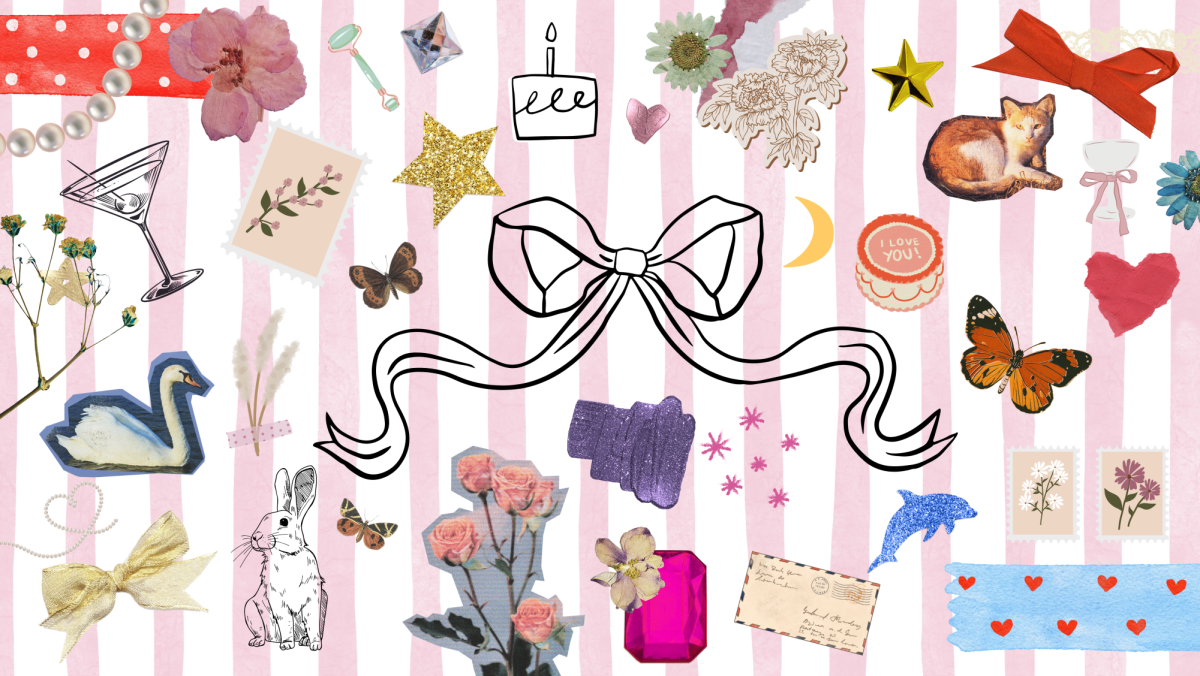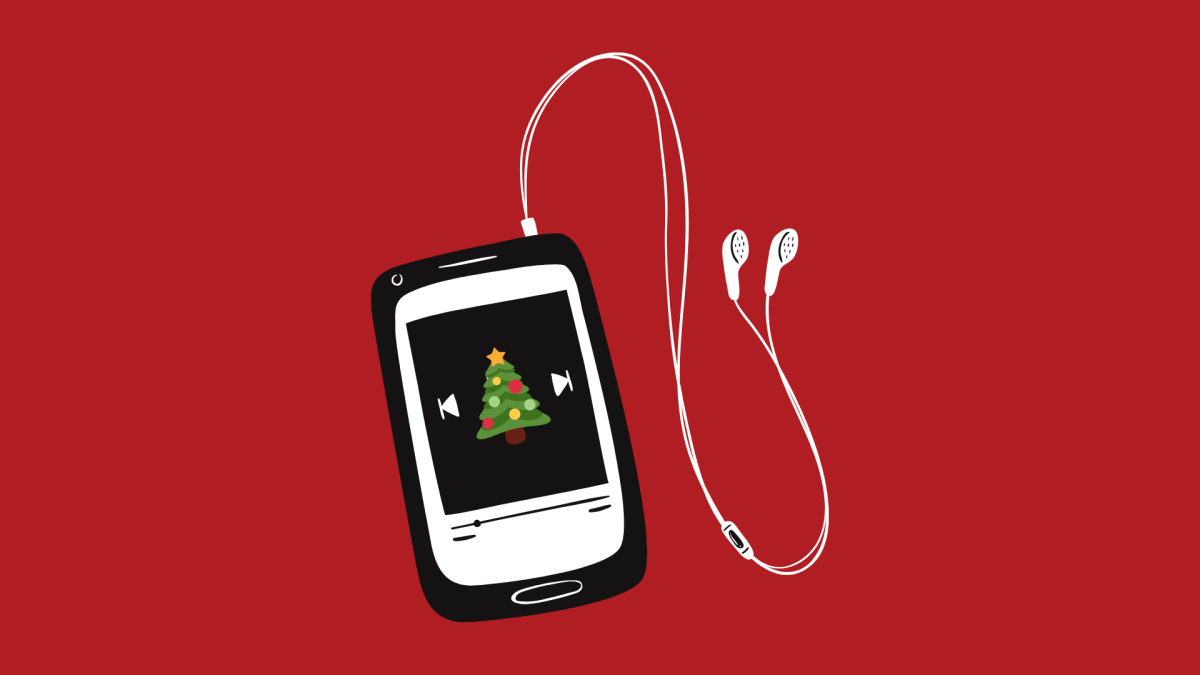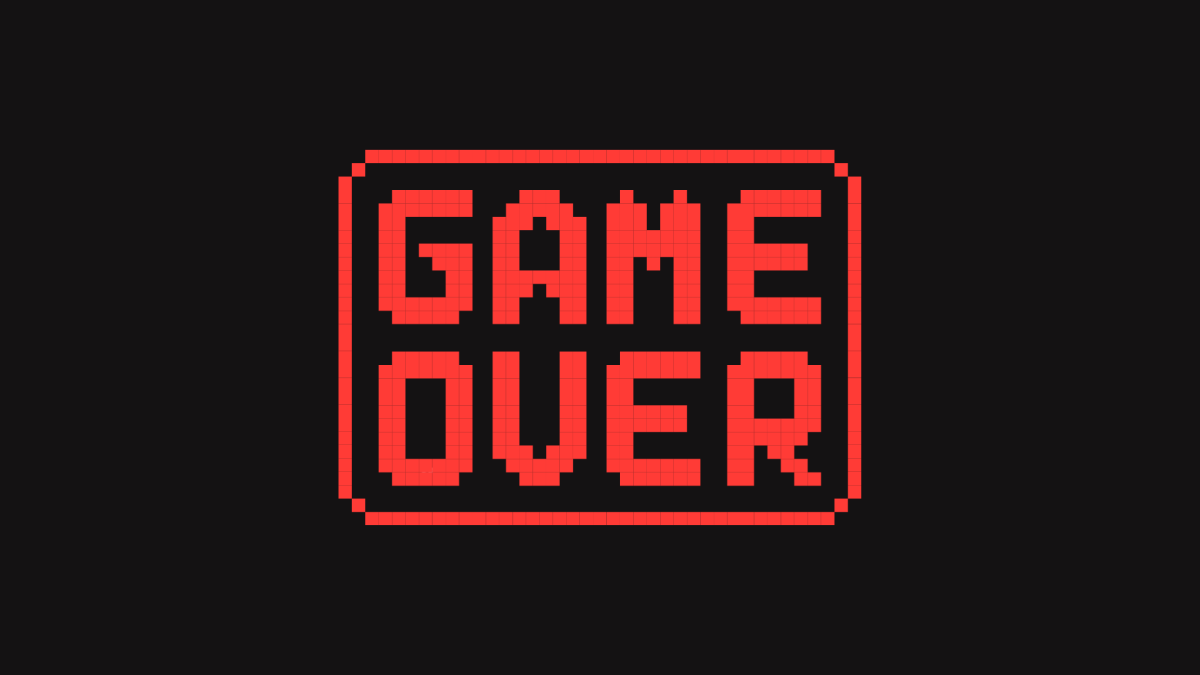About the graphic:
The graphic was inspired by Martina Calvi, an Australian creator, who is known for her digital scrapbooking that has blown up on TikTok. She commonly uses ribbon and bows and gingham patterns in her work, as featured on her Instagram.
Girl math. Girl dinner. Hot girl walks.
There are currently numerous trends on TikTok based around using the word “girl” as a prefix. According to Merriam-Webster, girl refers to “a female child from birth to adulthood.” Originally, “girl” was a genderless term that was used to describe a young child. In terms of the trend on TikTok, using the word “girl” doesn’t refer specifically to women and instead is used interchangeably by all genders.
Girl math refers to videos of women talking about purchasing a $500 designer bag and breaking it down by cost per wear or women talking about using cash as “not real money,” just to name a few examples. These jokes are relatively harmless, but when some creators produce rhetoric about women being bad at math or not being able to handle math – that is counterproductive.
Women did technically have the right to open a bank account as early as the 1960s. But many banks turned women away if they tried to open an account without the consent of their husband. In 1974, when the Equal Credit Opportunity Act passed, all women were finally able to open a bank account without anyone else’s consent. That was only 50 years ago – most of our grandmothers, maybe even mothers, were alive when this happened.
There is also still a gender wage gap. As of 2022, American women typically earned 82 cents for every dollar earned by men, according to Pew Research Center. That is only a two cent increase since 2002 – the year that I was born.
Girl dinner originated from a video of a woman sharing how when she doesn’t feel like cooking, she’ll eat a random assortment of food from her pantry, you know crackers, cheese, pickles, whatever. However, this trend quickly became a breeding ground for eating disorder content for people to glamourize undereating.
After years of eating disorder content being available to women on Tumblr, the app decided to limit the posts of triggering content. It was a regular black hole for people looking to glorify self-harm and eating disorders. Self-harm scars. Thigh gaps. Girls so starved their ribs were poking out.
When I typed “starving” into the search bar to see if there is any content I could reference into this piece, Tumblr shared some resources for me to get help. This little public service announcement is part of a 2012 initiative that Tumblr launched to minimize and moderate blogs that “glorify or promote anorexia, bulimia, and other eating disorders; self-mutilation; or suicide,” as The Atlantic reported.
With teenagers and children spending more time online than ever before, it appears to be more than coincidental that in less than a decade, the rate of eating disorders had risen by 119% in kids under 12. While TikTok officially does not allow content promoting or glorifying eating disorders, last year The Guardian found a variety of harmful pro-anorexia hashtags remained searchable on the app.
The girl trend video that raised another major red flag to me was a video of a woman talking about “girl hobbies” and then listed off “getting a coffee” and “spending money” – neither of which are real hobbies.
With the use of the “girl” trending, it is important to reference that “croquette core” is also trending. From bows reminiscent of what little girls wear to ballet flats, TikTok has been connecting women with their inner girl.
TikTok and social media as a whole has taken a toll on women’s self esteem, specifically as they age. Soft filler tissue and botox is one of the most minimally invasive forms of plastic surgery. It is used to make lips or cheeks look fuller. 3.4 million people received soft filler tissue in 2020, as reported by the American Society of Plastic Surgeons.
But this is not TikTok’s fault. In films, most younger women – even minors – are more likely to be seen in more “sexy” clothing or even nude or partly nude compared to women who are 40 and up.

Most women I know recalled being cat called or hit on more while underage than as an adult. According to a 2015 study on catcalling, 84 percent of women are harassed on the street before they turn 17. The ages most women are catcalled are ages 11-to-17.
We live in a society that makes women feel bad for aging normally. From preventive botox to wearing bows and frilly socks we all hated as children, there is constantly a new way to hang onto your youth – instead the dreaded alternative, aging normally.
When a 28-year-old woman posted a video attempting to embrace her natural face, she was greeted with comments of skincare recommendations, tips on avoiding sun damage and more.
Embracing your femininity is okay! There is nothing wrong with wearing bows or lace or any stereotypically feminine clothing. There is something wrong with further perpetuating negative stereotypes of women by saying women are bad at math or don’t have real hobbies.
I’m not saying that the “girl” trend isn’t fun or that people aren’t allowed to enjoy things that they did as children, but I think it’s important to draw a line once it becomes harmful and to step away to see how our social media use affects us.
Engagement Editor Debra Murray can be reached at [email protected]. Follow her on X @debramurrayy.
If you would like to submit a reaction to a piece, Letter to the Editor or other submission, please send it to commentary editor Price Wilborn at [email protected] or [email protected].






